
How to Use Adafruit 16x8 LED Matrix Backpack Orange: Examples, Pinouts, and Specs
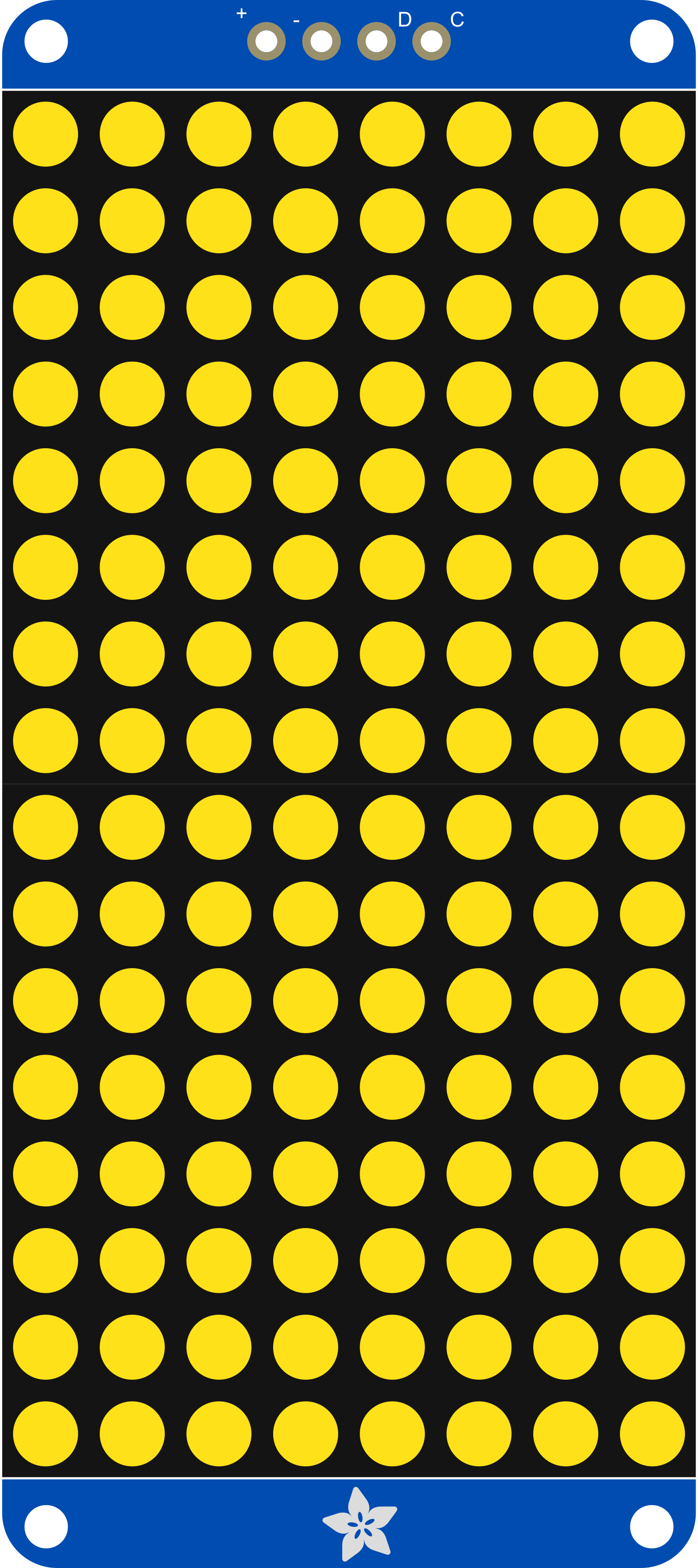
 Design with Adafruit 16x8 LED Matrix Backpack Orange in Cirkit Designer
Design with Adafruit 16x8 LED Matrix Backpack Orange in Cirkit DesignerIntroduction
The Adafruit 16x8 LED Matrix Backpack is a versatile and visually striking electronic component designed to drive an 16x8 matrix of LEDs, providing a platform for creating dynamic displays and visual indicators. This orange variant of the LED matrix backpack offers a unique and vibrant color output, making it suitable for attention-grabbing signage, wearable electronics, and interactive art installations. It simplifies the process of controlling multiple LEDs by using the I2C interface, which minimizes the number of pins required from the controlling microcontroller, such as an Arduino UNO.
Explore Projects Built with Adafruit 16x8 LED Matrix Backpack Orange
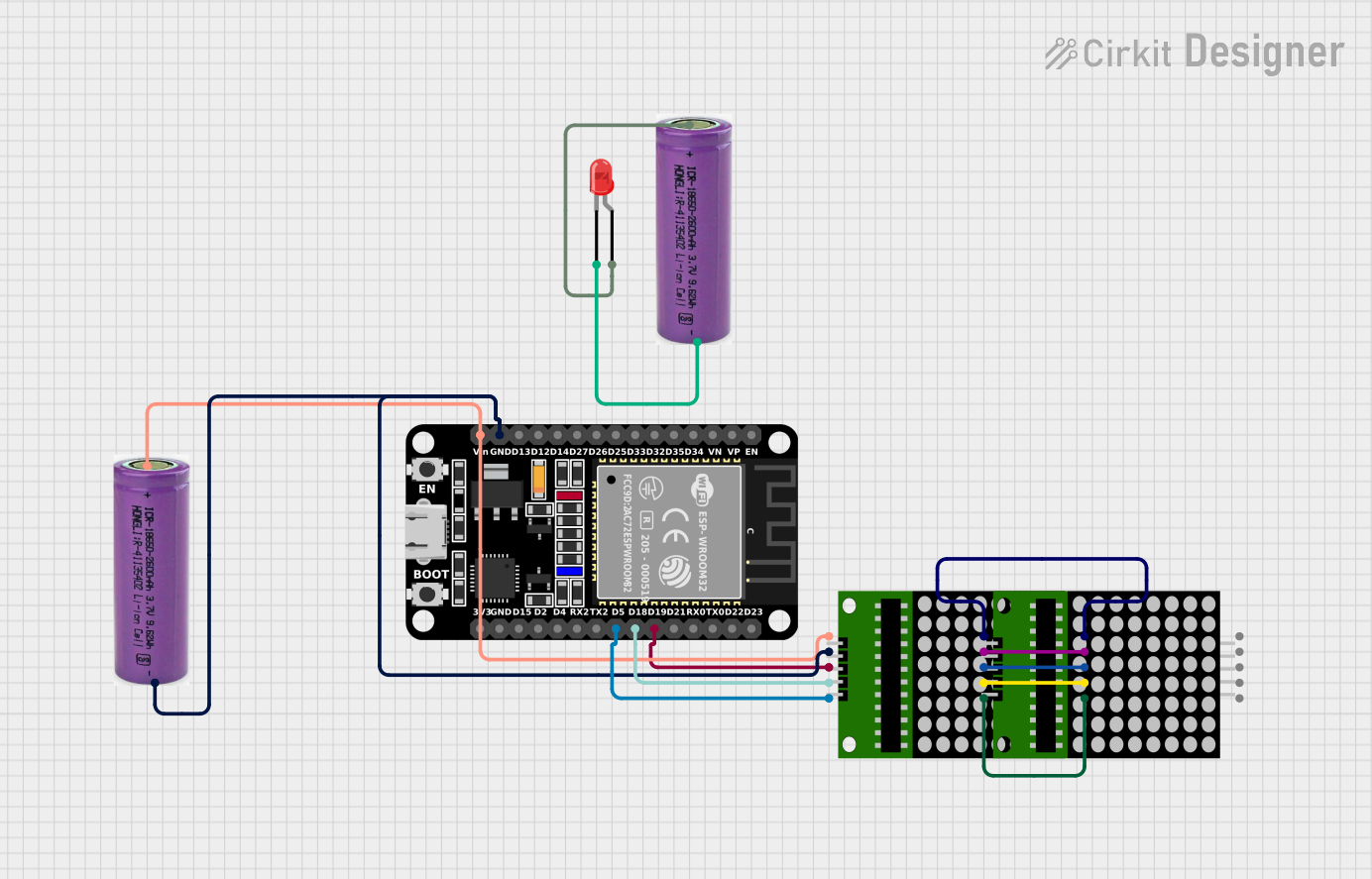
 Open Project in Cirkit Designer
Open Project in Cirkit Designer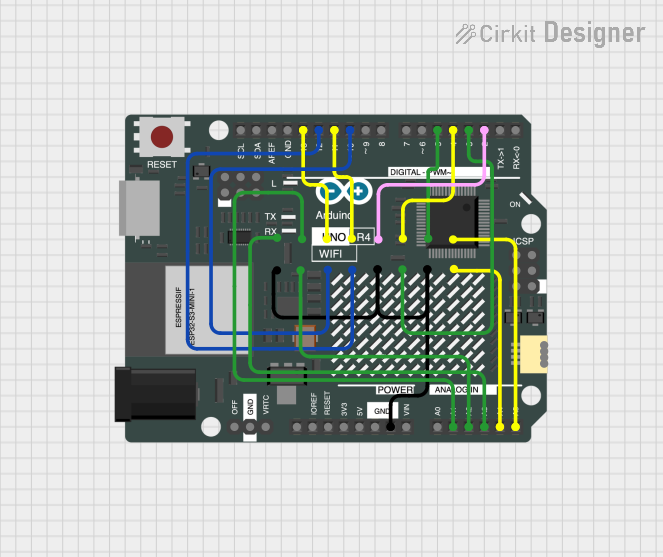
 Open Project in Cirkit Designer
Open Project in Cirkit Designer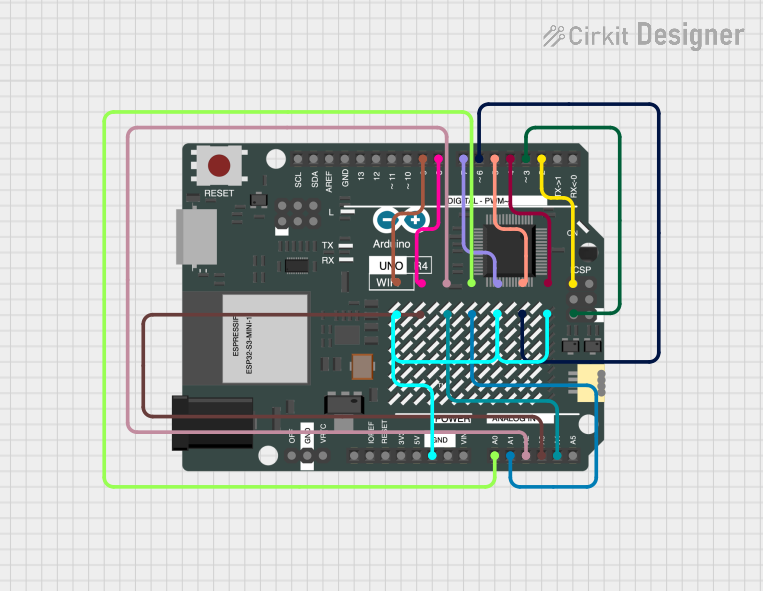
 Open Project in Cirkit Designer
Open Project in Cirkit Designer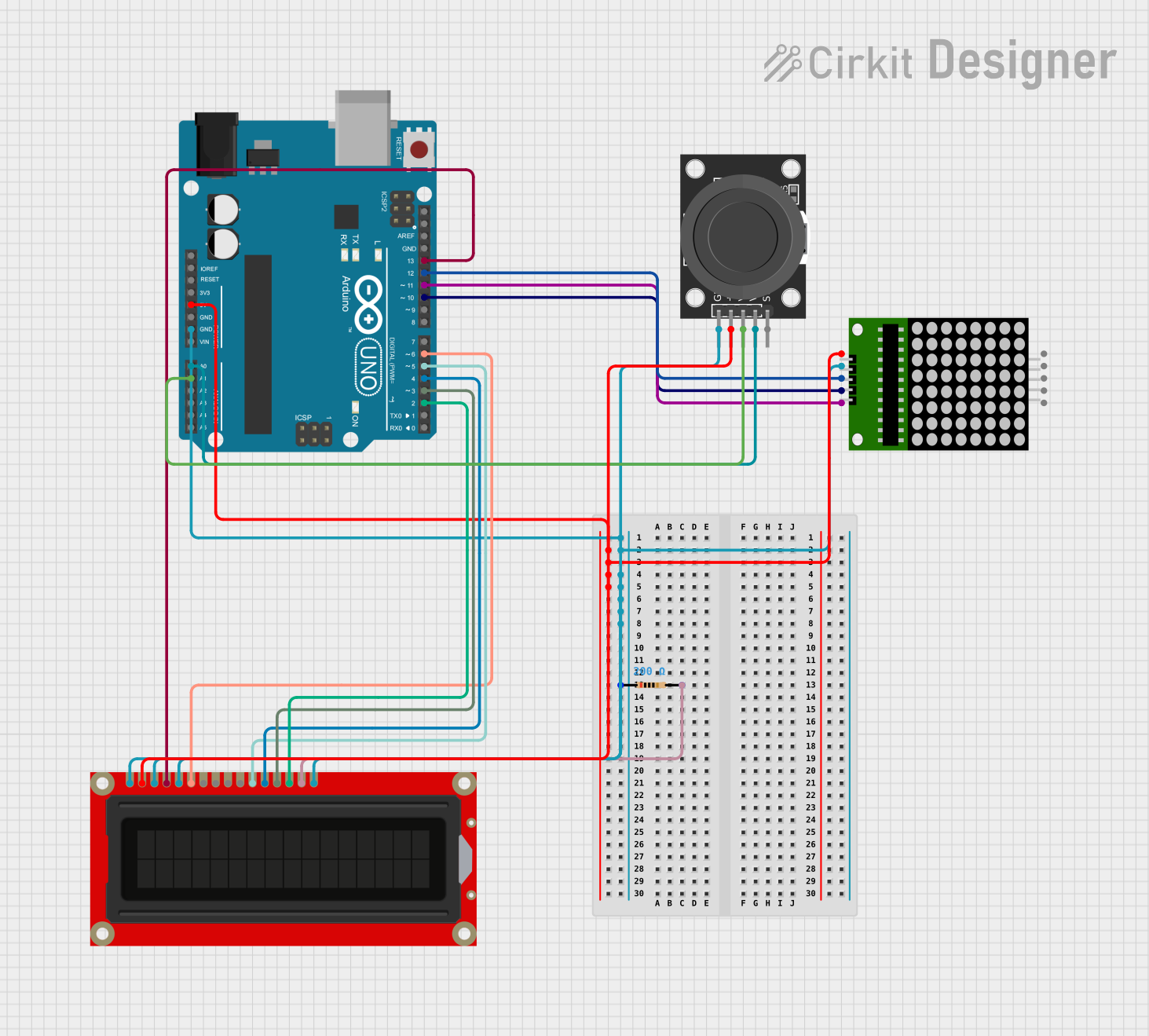
 Open Project in Cirkit Designer
Open Project in Cirkit DesignerExplore Projects Built with Adafruit 16x8 LED Matrix Backpack Orange

 Open Project in Cirkit Designer
Open Project in Cirkit Designer
 Open Project in Cirkit Designer
Open Project in Cirkit Designer
 Open Project in Cirkit Designer
Open Project in Cirkit Designer
 Open Project in Cirkit Designer
Open Project in Cirkit DesignerTechnical Specifications
Key Technical Details
- Operating Voltage: 4.5V to 5.5V
- Max Current (per LED): 30mA
- Max Current (for all LEDs): 1.2A
- Communication Interface: I2C (TWI)
- I2C Address: 0x70 (default, adjustable)
- Dimensions: 1.2" x 1.9" x 0.1" (without headers)
Pin Configuration and Descriptions
| Pin Number | Name | Description |
|---|---|---|
| 1 | GND | Ground connection |
| 2 | VCC | Power supply (4.5V to 5.5V) |
| 3 | SDA | I2C Data line |
| 4 | SCL | I2C Clock line |
| 5 | ADDR | Address selection (connect to GND or VCC to change address) |
| 6 | RST | Reset pin (optional use) |
Usage Instructions
Connecting to a Circuit
- Power Supply: Connect the VCC pin to a 4.5V to 5.5V power supply and the GND pin to the ground of your system.
- I2C Communication: Connect the SDA and SCL pins to the corresponding I2C data and clock lines on your microcontroller.
- Address Selection: The ADDR pin can be left unconnected for the default address (0x70), or connected to GND or VCC to select an alternate address if multiple devices are on the same I2C bus.
- Reset (Optional): The RST pin can be connected to a digital pin on your microcontroller if you wish to control the reset function programmatically.
Programming with Arduino
To control the Adafruit 16x8 LED Matrix Backpack with an Arduino UNO, you will need to use the Adafruit LED Backpack library, which can be installed via the Arduino Library Manager.
Here is a simple example code to get started:
#include <Wire.h>
#include <Adafruit_GFX.h>
#include <Adafruit_LEDBackpack.h>
Adafruit_8x16matrix matrix = Adafruit_8x16matrix();
void setup() {
matrix.begin(0x70); // Start the LED matrix with the I2C address
matrix.setBrightness(10); // Set the brightness to a value between 0 and 15
}
void loop() {
matrix.clear(); // Clear the matrix display
matrix.setCursor(0, 0); // Set cursor at top-left corner
matrix.print(F("Hello")); // Print a message on the matrix
matrix.writeDisplay(); // Update the display with the new data
delay(500); // Wait for half a second
}
Important Considerations and Best Practices
- Power Requirements: Ensure that the power supply can handle the maximum current draw if all LEDs are lit.
- I2C Addressing: When using multiple I2C devices, make sure each device has a unique address.
- Brightness Control: Be mindful of the brightness level to avoid excessive current draw and to prolong the life of the LEDs.
Troubleshooting and FAQs
Common Issues
- LEDs Not Lighting Up: Check the power supply connections and verify that the I2C lines are properly connected.
- Garbled Display: Ensure that there are no conflicting I2C addresses and that the library and initialization code are correctly implemented.
- Dim LEDs: Confirm that the brightness is set appropriately in the code and that the power supply is adequate.
Solutions and Tips for Troubleshooting
- Check Connections: Double-check all wiring and solder joints for solid connections.
- I2C Scanning: Use an I2C scanner sketch to verify that the Arduino can detect the LED matrix backpack.
- Library Updates: Make sure you have the latest version of the Adafruit LED Backpack library.
FAQs
Q: Can I chain multiple LED matrix backpacks together? A: Yes, you can chain multiple units together by connecting their I2C lines in parallel and assigning unique addresses to each.
Q: How do I change the I2C address? A: The I2C address can be changed by connecting the ADDR pin to GND or VCC. Refer to the datasheet for the address mapping table.
Q: Can I use this LED matrix with a 3.3V system? A: The LED matrix is designed for 4.5V to 5.5V operation. Using it with a 3.3V system may result in dimmer LEDs or non-functioning display. Use a level shifter if necessary.
For further assistance, consult the Adafruit support forums or the detailed product guides available on the Adafruit website.